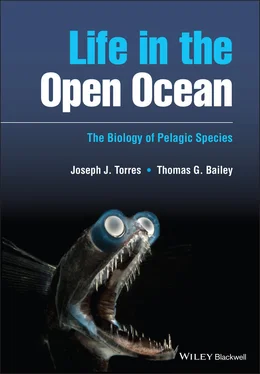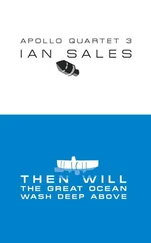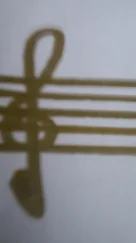Joseph J. Torres - Life in the Open Ocean
Здесь есть возможность читать онлайн «Joseph J. Torres - Life in the Open Ocean» — ознакомительный отрывок электронной книги совершенно бесплатно, а после прочтения отрывка купить полную версию. В некоторых случаях можно слушать аудио, скачать через торрент в формате fb2 и присутствует краткое содержание. Жанр: unrecognised, на английском языке. Описание произведения, (предисловие) а так же отзывы посетителей доступны на портале библиотеки ЛибКат.
- Название:Life in the Open Ocean
- Автор:
- Жанр:
- Год:неизвестен
- ISBN:нет данных
- Рейтинг книги:5 / 5. Голосов: 1
-
Избранное:Добавить в избранное
- Отзывы:
-
Ваша оценка:
- 100
- 1
- 2
- 3
- 4
- 5
Life in the Open Ocean: краткое содержание, описание и аннотация
Предлагаем к чтению аннотацию, описание, краткое содержание или предисловие (зависит от того, что написал сам автор книги «Life in the Open Ocean»). Если вы не нашли необходимую информацию о книге — напишите в комментариях, мы постараемся отыскать её.
Life in the Open Ocean: The Biology of Pelagic Species
Life in the Open Ocean: The Biology of Pelagic Species
Life in the Open Ocean — читать онлайн ознакомительный отрывок
Ниже представлен текст книги, разбитый по страницам. Система сохранения места последней прочитанной страницы, позволяет с удобством читать онлайн бесплатно книгу «Life in the Open Ocean», без необходимости каждый раз заново искать на чём Вы остановились. Поставьте закладку, и сможете в любой момент перейти на страницу, на которой закончили чтение.
Интервал:
Закладка:
Digestion
When prey contacts a tentacle, only the tentacles attached to the prey contract to bring the prey to the mouth of the gastrozooid. The rest of the colony continues fishing. Gastrozooids work individually or in teams. If the prey is too large to be completely engulfed by a single zooid (e.g. a fish in the case of Physalia ), more zooids will be recruited to finish the job. Presumably, the additional zooids are joining the job in response to chemical signals released by the captured prey. Digestion of small prey items such as copepods can be quite rapid: 1–2 minutes (Mackie et al. 1987).
As is the case with other cnidarian groups, digestion of prey is achieved using both extracellular and intracellular mechanisms. It takes place primarily in the gastrozooid, where breakdown of food is accompanied by rhythmic contractions. Particles created during the process of extracellular digestion are taken up via phagocytosis by the endodermal cells of the gastrozooid or, in some cases, can be passed along to palpons via the contractions noted above and taken up there. Further processing takes place in the endodermal cells of both structures. Eventually the cells slough off from the endoderm and disintegrate, allowing the nutrients to be absorbed by the rest of the colony via the stem canal. Indigestible parts of prey are ejected from the gastrozooids the same way they entered, out of the mouth with the help of basal contractions. Palpons expel particulates through a pore in their tip.
Diets and Selectivity
Diets of siphonophores correlate roughly with the suborders. Calycophorans mainly consume small copepods, whereas physonects eat larger copepods as well as larger soft and hard‐bodied prey such as crustacean larvae, amphipods, ostracods, and pteropods. Cystonects appear to specialize on fish larvae. Even Physalia , though capable of taking fish greater than 4 cm in length, feeds primarily on fish larvae 2–20 mm in size (Purcell 1984). Overall, despite Physalia ’s well‐deserved reputation as potent stingers, they appear to favor small weak swimmers as prey.
Some siphonophores appear to capture particular prey species at a greater frequency than would be expected by the abundance of those prey items in the zooplankton community. To explain the apparent selectivity, we need to use the same principles of prey capture that were applied to medusae in the Madin (1988) model described above. Selectivity can be influenced by effectiveness of nematocysts in retaining prey as well as the probability of large vs. small prey encountering a tentacle.
Table 3.6summarizes ingestion data from a variety of species in a variety of habitats. The take‐home lesson is the substantial impact of siphonophores as predators. In sufficiently high concentrations, siphonophores are capable of enormous local impacts on the zooplankton community. Those studies that have addressed their local influence as predators (Purcell 1982; Purcell and Kremer 1983) concluded that siphonophores were the most important gelatinous predators on copepods in two quite disparate locations: Friday Harbor in Washington and Catalina Island in the California Borderland.
Table 3.6 Ingestion rates of Siphonophores.
Source: Adapted from Mackie et al. (1987), table 15 (p. 238), with the permission of Academic Press (Elsevier).
| Siphonophore | Location | Prey type | Prey abundance | Feeding rate per individual • d −1(carbon content; caloric content) | % of prey items in diet | % of prey population consumed • d −1 | References |
|---|---|---|---|---|---|---|---|
| Physalia physalis | Gulf of Mexico | Fish larvae | 0.2 m −3 | Avg. 120 prey | 94.1 | 60 | Purcell (1984) |
| Rhizophysa eysenhardii avg. 8 gastrozooids | Gulf of California | Fish larvae | Avg. 28 m −3 | Avg. 8.8 prey (7300 μg C; 107 cal) | 100 | 28 | Purcell (1981a) |
| Sphaeronectes gracilis 38.5 ± 9.6 gastrozooids | Southern California | Copepods | Avg. 250 m −3 | 8.1–15.5 prey (3.9–6.2 μg C; 0.06–0.09 cal) | 100 | 2–4 | Purcell and Kremer (1983) |
| Muggiaea atlantica avg. 22 gastrozooids | Friday Harbor, WA | Copepods | Avg. 9121 m −3 | 5.5–10.5 prey (2.6–4.2 μg C; 0.03–0.05 cal) | 100 | 0.1–0.2 | Purcell (1982) |
| Rosacea cymbiformis avg. 40 cormidia/colony | Gulf of California | Copepods | Avg. 1495–1695 m −3 | 89.4 prey (616–2068 μg C; 9.4–31.5 cal) | 75.4 | 8 | Purcell (1981b) |
Ecological Importance
Even for gelatinous species, siphonophores are exceptionally difficult to enumerate owing to their delicate colonial structure. Nets tend to reduce them to fragments; those fragments are difficult to quantify as numbers of individuals. The most appropriate techniques for evaluating numbers of siphonophores are mainly visual counts, either from diver‐based observations or for deeper‐living species, using submersible‐based observations either manned or unmanned (Remotely Operated Vehicles – ROV’s, or AUV’s – Autonomous Underwater Vehicles), Techniques include using diver‐powered meter hoops and flowmeters, counting individuals as they passed through the hoops (Purcell 1981a, b) and, in a variation of the same theme, using larger (5 m × 5 m) grids towed behind a slowly moving boat while divers count ( Biggs et al. 1981, 1984). Options using submersibles mainly include evaluating nearest‐neighbor distances (Mackie and Mills 1983) and mounting a hoop in the front of the submersible.
In the open ocean, siphonophores are found at densities of less than 1/1000 m 3. However, they can number 5–10 m −3( Table 3.7) in more productive coastal regions (Mackie et al. 1987). Most often they are outnumbered in the open ocean by ctenophores, but their coastal numbers can exceed those of other gelatinous forms.
Locomotion
Siphonophores differ considerably, by suborder, in their ability to move about. The cystonects, which have an apical float but no swimming nectophores to aid in propulsion, are limited to contracting and relaxing their stem for movement. Consequently, their swimming ability is weak at best. However, members of the Cystonectae, particularly Physalia, are drifters par‐excellence (Totton 1960; Woodcock 1971; Mackie 1974), using their float as a sail to cruise the open sea. Physalia has two basic morphs, a left‐hand sailor and right‐hand sailor, mirror images of one another that sail 45° to the left and right of the wind direction ( Figure 3.34). The crest of the float provides an important part of the sail; its curvature and stiffness may be adjusted to form a characteristic “sailing posture” for most effective movement (Mackie 1974).
Many of the physonects are capable swimmers, combining a float for buoyancy and a battery of nectophores for propulsion. The genus that has received the most attention is Nanomia, a capable swimmer often observed from submersibles. Mackie et al. (1987) described three swimming modes:
1 Synchronous forward swimming, usually considered an escape response to stimulation of the siphosome, where all the nectophores contract together for one or two cycles and produce a velocity of 20–30 cm s−1, a respectable velocity for any small swimming species.
2 Asynchronous forward swimming, where the nectophores contract in a less coordinated fashion, producing a forward velocity of 8–10 cm s−1. Sometimes the nectophores on each side of a column contract rhythmically to produce a side‐to‐side forward movement.
Читать дальшеИнтервал:
Закладка:
Похожие книги на «Life in the Open Ocean»
Представляем Вашему вниманию похожие книги на «Life in the Open Ocean» списком для выбора. Мы отобрали схожую по названию и смыслу литературу в надежде предоставить читателям больше вариантов отыскать новые, интересные, ещё непрочитанные произведения.
Обсуждение, отзывы о книге «Life in the Open Ocean» и просто собственные мнения читателей. Оставьте ваши комментарии, напишите, что Вы думаете о произведении, его смысле или главных героях. Укажите что конкретно понравилось, а что нет, и почему Вы так считаете.












